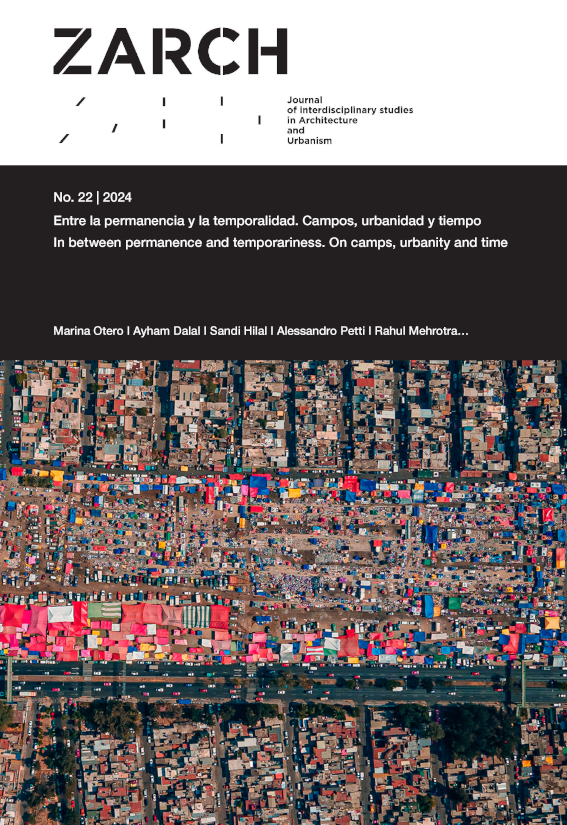Tangled systems. The Leoz Method versus the construction technique
DOI:
https://doi.org/10.26754/ojs_zarch/zarch.2024229897Keywords:
Leoz Method, Concrete art, Industrialization, Hyperpolyhedron, BrasiliaAbstract
Rafael Leoz was an enigmatic architect among those of his generation because he was searching for something different from the others: a method for designing the architecture of the future; and the fact that he was able to construct some buildings with this 'method' redefines the importance of his contribution. After his participation in the 6th Sao Paulo Biennale in 1961, he composed an attractive narrative which, collected in numerous publications, has brought him to the verge of mythification. Research on his work has focused mainly on the "Hele module" and its involvement in the industrialisation of social housing, and this is the main reason why the implications of his method, which is included in the book "Networks and Spatial Rhythms", have not been studied in depth.
In the short 15 years of his professional life, Leoz established fruitful transversal relationships with artists, thinkers and politicians, but it was his connection with concrete art and his collaboration with the CCUM (Centro de Cálculo de la Universidad de Madrid) that strengthened research into his method. As early as the 1970s, with the incorporation of the new geometric dimensions of the hyperpolyhedra, the principles of which were outlined in an unfinished new book, he verified the validity of the "Leoz Method" with the construction of the Spanish Embassy in Brasilia. The Leoz Method, which can be applied to both teaching and architectural design, shows a way of working that, based on its modular essence, allows us to understand the creation of spaces as the result of a constant combinatorial transformation that unfolds over time.
Downloads
References
Agrasar-Queroga, Fernando. “La arquitectura de la Embajada”. Rafael Leoz, arquitecto de la Embajada de España en Brasil. Brasilia: Consejería Cultural de la Embajada de España en Brasil, Ed. Briquet de Lemos, 2012.
Álvarez, Raquel; Galván, Noelia; Martínez, José Manuel. "Maquetas y vivienda modular: la experiencia del taller de arquitectura de Ricardo Bofill." DOI: 10.4995/EGA.2021.14537.
Archer, L. Bruce, "Systematic method for designers." Design 172 (April 1963)
Mandelbrot, Benoît, Los objetos fractales: Forma, azar y dimensión. Barcelona: Editorial Tusquets, 1996.
Cervero, Noelia. "Rafael Leoz y la abstracción geométrica en los años sesenta" DOI:10.4995/EGA.2020.12650.
Ghyka, Matila. Estética de las Proporciones en la Naturaleza y en las artes. Barcelona: Editorial Poseidón, 1977.
Fundación Rafael Leoz, "Monografía sobre la Fundación Leoz" Revista BODEN nº17, Spring 1978.
Gómez de las Heras, María Elisa, "Rafael Leoz y la integración de las artes en una arquitectura social" Revista Cuadernos hispanoamericanos, no. 341 (1978): 335-360.
Jones, John Christopher; Thornley, D.G. A Method of Systematic Design. Oxford: Pergamon Press, 1963.
Le Corbusier, Le Modulor. Buenos Aires: Editorial Poseidón, 1953.
Leoz, Rafael, Redes y Ritmos Espaciales. Fundación Rafael Leoz para la Investigación y Promoción de la Arquitectura Social, 1969. Madrid-Barcelona. Editorial Blume, 1979.
Lima, Angélica; Victal, Jane, "Rafael Leoz y los diálogos transnacionales propiciados por las Bienales de Sao Paulo" Bitácora Arquitectura, no. 47 (2021).
López, Jesús, "Pensamiento, filosofía y principios arquitectónicos en la obra de Rafael Leoz: el espacio como materia prima." Pioneros de la arquitectura moderna española: Vigencia de su pensamiento y obra, 70-93. Madrid: Fundación Alejandro de la Sota, 2015.
López, Jesús; Ruiz, J. Antonio, "Los dibujos de Rafael Leoz sobre vivienda social" UNED, 2021.
Moya, Luis, "Rafael Leoz" Ministerio de Educación y Ciencia, no. 151 (1978): Madrid.
Varios autores, "Rafael Leoz, arquitecto de la embajada de España en Brasil" Rafael Leoz, arquitecto de la Embajada de España en Brasil, Consejería Cultural de la Embajada de España en Brasil with Ed. Briquet de Lemos, Brasilia, 2012.


